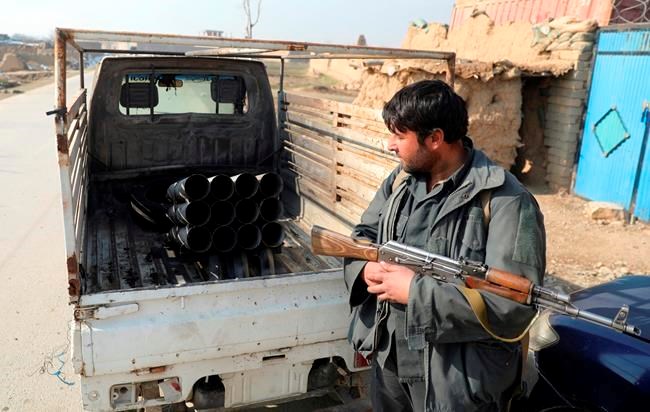WASHINGTON — The U.S. military has met its goal of reducing the number of troops in Afghanistan to about 2,500 by Friday, a drawdown that may have violated a last-minute congressional prohibition.
The reduction could complicate matters for the incoming Biden administration, which must determine how to handle a Trump administration commitment to the Taliban to remove all U.S. military, intelligence and contractor personnel from Afghanistan by May as a move to spur peace negotiations. Those talks are in an early stage.
Senior U.S. commanders are skeptical of the Taliban's stated commitment to peace, although they have said they can accomplish their mission in Afghanistan with 2,500 troops.
Christopher Miller, in his final days as the acting secretary of
President Donald Trump, who ordered the reduction in November, when there were about 4,000 U.S. troops in Afghanistan, aid Thursday that troop levels in Afghanistan had reached a 19-year low, although he did not mention a troop number. Last February his administration struck a deal with the Taliban to reduce American troop levels in phases and to go to zero by May 2021. It is unclear how the incoming Biden administration will proceed.
President-elect Joe Biden, who has advocated keeping a small counterterrorism force in Afghanistan as a way to ensure that extremist groups like al-Qaida are unable to launch attacks on the United States, faces a number of questions on Afghanistan. One is how and whether to proceed with fledgling peace talks between the Taliban and the Afghan government..
Trump in his brief statement alluded to his longstanding desire to get out of Afghanistan entirely.
“I will always be committed to stopping the endless wars,” he said, referring to U.S. wars that have dragged on in Afghanistan since 2001 and in Iraq for much of the period since 2003.
Although senior military officials had cautioned against speedy troop reductions in Afghanistan, Miller announced on Nov. 17 that he was implementing Trump's order. As a result, military commanders scrambled to pull more than 1,500 troops out of the country in the last few weeks. At Trump's order, commanders also cut U.S. troop levels in Iraq to 2,500 from about 3,000 in the same period. Miller confirmed Friday that the Iraq drawdown had been completed.
The Afghanistan decision was seen by some as unnecessarily complicating the decision-making of the incoming administration. Trump at the time had refused to acknowledge that he had lost the election and would be ceding to Biden on Jan. 20. Some in Congress, including fellow Republicans, opposed Trump's decision.
Under the National
The
In his statement Friday, Miller made no mention of this statutory prohibition. However, a spokesman, Maj. Robert Lodewick, said Trump signed a waiver of the legislative prohibition, stipulating that the drawdown was important to U.S. national security interests. Earlier in the week, Trump had not yet signed the waiver, meaning it came after the drawdown had been completed.
Miller said Friday the Pentagon is planning for additional troop reductions to zero by May, adding that “any such future drawdowns remain conditions based.”
The legislative prohibition on completing the drawdown put the Pentagon in a bind, coming weeks after it had begun the drawdown.
“Convention dictates that reducing troop levels, associated equipment and adjusting associated force protection requirements across a country-wide combat zone is not something that can be paused overnight without increasing risk to the force and core mission goals,” Lodewick said.
The main reason for concern about a too-quick troop withdrawal is what the Pentagon sees as continued high levels of Taliban violence against the Afghan government. Some U.S. officials have questioned the wisdom of fully withdrawing, in accordance with the February 2020 agreement with the Taliban, if violence remains high.
The U.S. invasion of Afghanistan in October 2001 was aimed at overthrowing the Taliban regime, running al-Qaida out of the country and laying the groundwork for a global “war on terrorism.” It turned into something more ambitious but less well-defined and became far more costly in blood and treasure. During Biden's time as
Robert Burns And Lolita C. Baldor, The Associated Press



